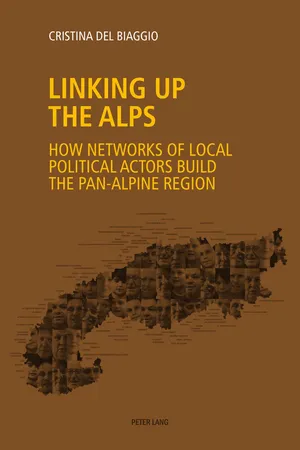
- 372 pages
- English
- PDF
- Available on iOS & Android
About this book
The signing of the Convention on the protection of the Alps (Alpine Convention) by the Alpine States in 1991 heralded new practices and perspectives. This transnational project is intended to solve important challenges faced by the Alpine population. Convinced that the Alpine Convention should fulfil its potential, some non-governmental organizations and some active persons created networks of local political actors to connect local representatives, researchers, managers of protected areas and ecological associations. These were designed to realize a sustainable pan-Alpine region. This book endeavours to understand how and why local political actors, organized in pan-Alpine networks, chose to take mountain regions in general, and the Alps in particular, as the shared frame of reference for their involvement. It explores if and how a pan-Alpine identity detached from and/or combined with the more «traditional» national identities is developing among and enacted by local political actors engaged for the Alpine Convention. It also analyzes the socio-political significance of local political actors' involvement in the newly constituted pan-Alpine networks.
Frequently asked questions
- Essential is ideal for learners and professionals who enjoy exploring a wide range of subjects. Access the Essential Library with 800,000+ trusted titles and best-sellers across business, personal growth, and the humanities. Includes unlimited reading time and Standard Read Aloud voice.
- Complete: Perfect for advanced learners and researchers needing full, unrestricted access. Unlock 1.4M+ books across hundreds of subjects, including academic and specialized titles. The Complete Plan also includes advanced features like Premium Read Aloud and Research Assistant.
Please note we cannot support devices running on iOS 13 and Android 7 or earlier. Learn more about using the app.
Information
Table of contents
- Cover
- Contents
- 1. Introduction
- 2. Theoretical framework
- 3. Methodology
- 4. The actors of the Alpine region
- 5. Regional objectivation and identification
- 6. Pan-Alpine networking: performing the regional assemblage
- 7. Socio-political significance of the pan-Alpine region
- 8. Conclusion
- References